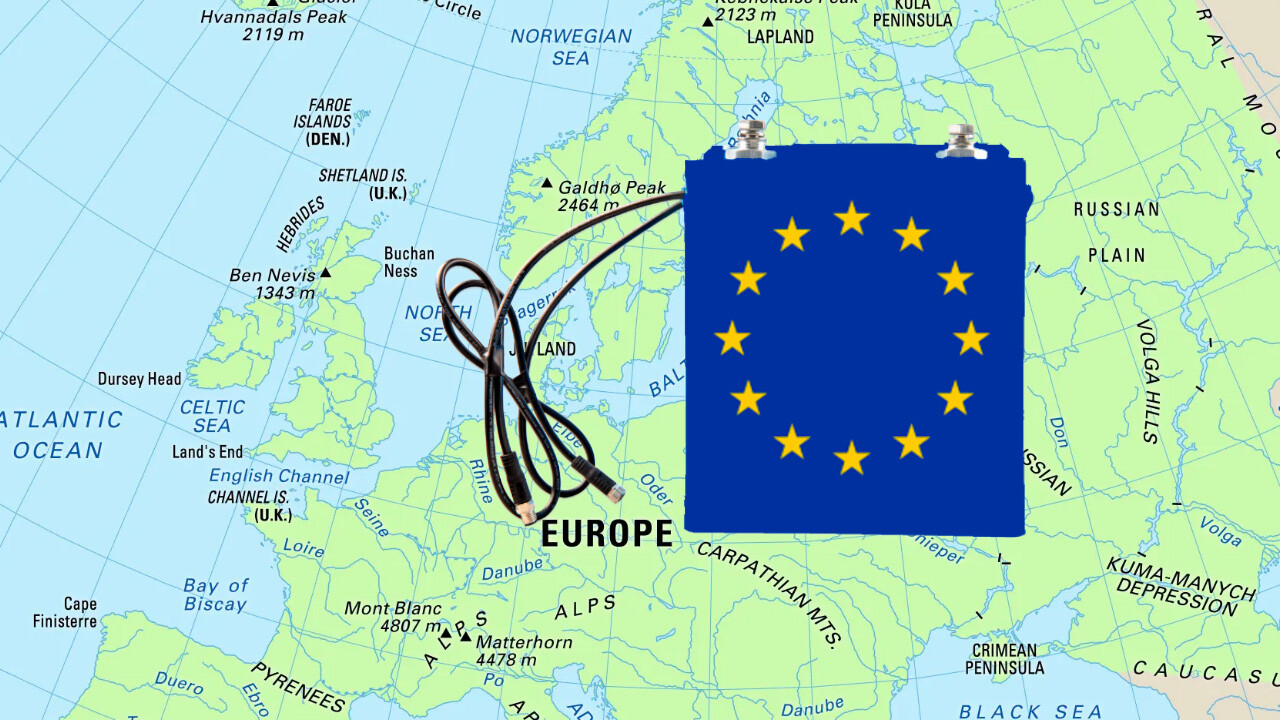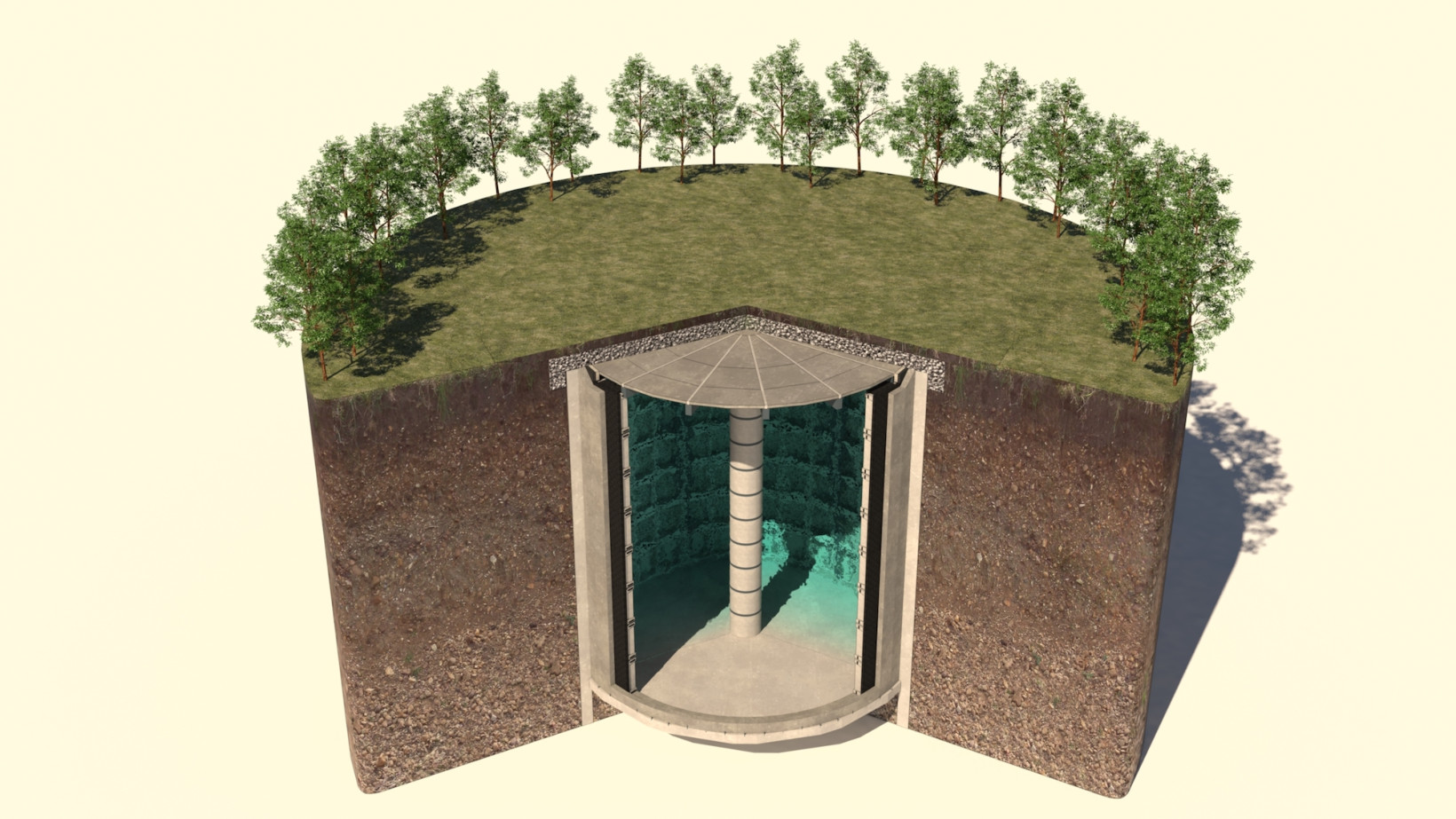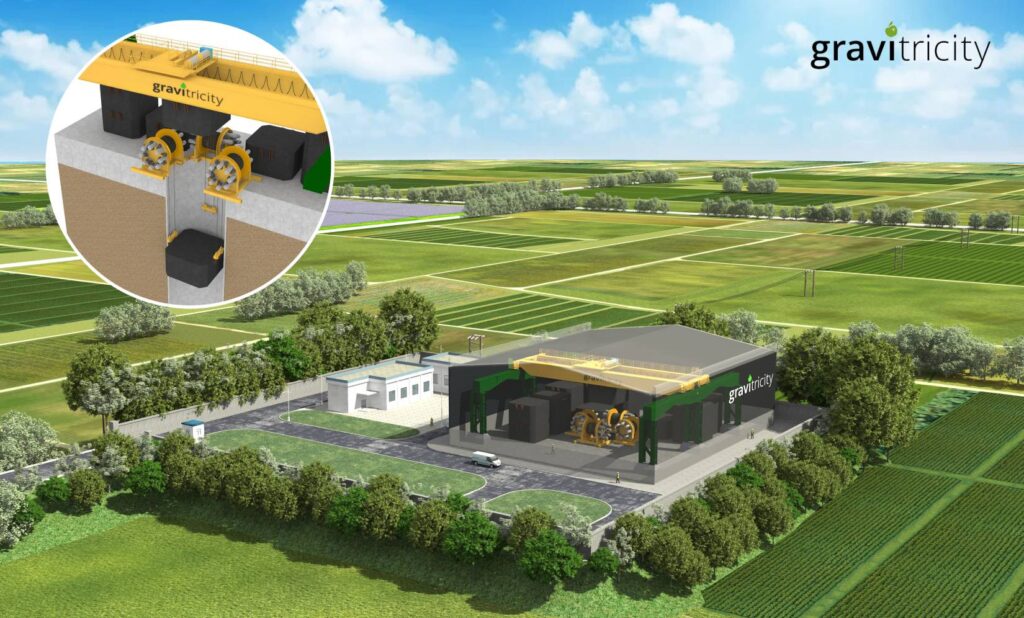
A “metal sock” in the ground stuffed full of hydrogen. Vats of scorching sand. Huge weights moving very, very slowly up and down old mineshafts. Is this the future of energy?
This menagerie of strange machines and heat-retaining vessels is poised to emerge across Europe as the continent seeks ways of storing the surplus energy produced by renewables. The UK, for example, wasted half a billion pounds’ worth of wind energy in 2021 because it had nowhere to store it. Without such storage, electricity must be used at the very moment it is generated.
As wind energy continues to go to waste across Europe, the EU is spending record sums – billions of euros – on gas imports as it slashes its reliance on fossil fuels from Russia.
“We’re at an inflexion point,” says Dominic Walters, chief corporate affairs officer at Highview Power, a UK-based firm that is working on a means of storing energy as liquid air. “There is a need to accelerate everything everywhere,” he adds, referring to the colourful array of energy storage projects currently at early stages of development in Europe.
Proponents of alternative energy storage technologies argue that lithium-ion batteries will only get us so far. Their production relies on mining, they don’t have very long lifespans, and are arguably not ideal for storing energy longer than several hours.
“If we don’t work out how to stabilise Europe’s electricity grids soon, we’ll come to regret it,” says Jacopo Tosoni, head of policy at the European Association for Storage and Energy (EASE): “You generally have a risk of blackouts in 2030.”
A scramble is now on to put the necessary storage media in place so that energy can be kept ready and waiting until those moments when it is required.
The heat is on
In an industrial corner of Kankaanpää, Finland, a town home to around 12,000 people, there is a seven metre-tall, dark grey silo full of sand. Sand that can store energy in the form of heat.
“Our year-round efficiency is about 90% for the system, so 10% losses, which is obviously quite good,” says Tommi Eronen, chief executive and co-founder of Polar Night Energy, an eight-people-strong startup that’s raised €1.25 million to date. Eronen described how the sand, heated to 600˚C using surplus electricity, will stay hot for months on end thanks to insulation lining the walls of the steel container. Pipes filled with hot air run through the sand in order to transfer heat in or out.
This sand battery is connected to a heat exchanger, says Eronen, so that operators can transfer thermal energy to district heating systems or, in possible future versions of the technology, turbines for electricity generation.
Eronen explains that early versions of the firm’s sand battery are relatively small in scale. The Kankaanpää unit offers 100kW of heating power, or a capacity of 8MWh, but Polar Night Energy is planning 100MW units and above, which could one day yield several GWh of juice. Such units would be around eight metres tall and 44 metres in diameter, a spokesman for Polar Night Energy says.
Expect news regarding the delivery of a 2MW version as early as this spring, adds Eronen.

In the Netherlands, GroeneWarmte is working on a different kind of thermal energy store called Ecovat, which uses water heated to temperatures up to 95˚C instead of the much hotter sand chosen by Polar Night Energy. “It basically just stores water in a big underground tank,” says project engineer Marijn van den Heuvel. “It’s a very large thermos.”
There’s a bit more construction required in setting this system up, though. The concrete “thermos” must be carefully installed in a huge, cylindrical hole in the ground. But after that, it can be covered over and the storage works in a similar way to Polar Night Energy’s design. The warmth the vessel cradles, for several months if necessary, would be transferred via heat exchangers to district heating systems. Van den Heuvel says GroeneWarmte with its team of eight people is engaging with a Danish company on a possible first deployment of this technology.
These approaches are fairly new, but Highview Power is already building a 50MW facility in Carrington, England, where energy is to be stored in the form of liquid air. The site will form a mind-boggling array of silos, pipework and platforms bunched together. It will comprise thermal and cold storage units and containers for the liquid air itself.
“We filter it so effectively it is clean air, that air is liquefied, and then we cryogenically freeze it,” explains Walters, referring to the process in which air is chilled to nearly -200˚C. By heating this very cold, liquid air later, it turns back into a gas and expands, and can be used to power a turbine, throwing electricity back to the grid. The system achieves an efficiency of 55-65%, which Highview says is comparable to other storage technologies. One of the benefits of this approach is that the technology should have a multi-decadal lifespan, much longer than lithium ion batteries, so governments might be able to plan around such infrastructure more easily.
Walters says the Carrington site should go live by the end of 2024. At the moment, the 55-people company is raising a £400-million funding round, and is planning a further 19 installations around the UK. It ultimately aims to supply 4GW, or 20%, of the UK’s expected energy storage needs by 2035.

Another storage method drops
Perhaps the simplest concept of all currently vying for its place in the energy storage landscape of the future is the gravity battery. Most of us learned about “potential energy” at school. Arguably, there is no better illustration of that than a big weight, held aloft, just itching to give in to gravity and fall to the floor. By attaching cables to such a weight – literally harnessing it – it is possible to slow its descent right down to about one metre per second and use the pulling force it exerts to generate electricity via a turbine.
Gravitricity’s approach in this vein, to begin with at least, is to lower its weights hundreds of metres down disused mine shafts with the help of a guiding mechanism. The company, which employs 17 people, has so far raised £7.5 million to make its vision a reality.
“If it were swinging around the place, very soon you’d get the shaft caving in on itself, which is obviously not what we’d want,” explains commercial director Robin Lane. A single weight might provide 4-8MW of power, he estimates, and could be calibrated to provide energy for a particular time period, say 15 minutes or an hour. Imagine a system where multiple weights are ready to descend, one after the other, in a carefully synchronised sequence so that electricity can be generated at a steady rate. Early commercial systems will use a combination of large weights totalling 1,000 tonnes.
Lane admits that this approach can’t yet compete with lithium ion batteries on a cost per MW basis but he argues gravity batteries will be commercially competitive eventually. Plus, it ought to be possible to hoist and lower weights again and again for many years with little impact on the integrity of the system. Lithium ion batteries, on the other hand, have stricter limitations in terms of cycling.
Another firm, Energy Vault, which employs 150 people, is also pursuing gravity battery technology. It has raised approximately $410m in funding to date.

Gravitricity is also exploring completely different ways of secreting energy in old mine shafts, such as lining them with metal and turning them into hydrogen storage units.
“It’s a metal sock, which you would lower into the shaft, and then you would entomb that metal sock with a mixture of ballast, concrete and steel,” says Lane. It potentially makes it easier and cheaper to store hydrogen at high pressures than above ground, since the container can rely on the existing geology of the shaft for structural support. The hydrogen could come from electrolysers linked to wind farms and use surplus energy to produce the gas from water.
For Tosoni, the diversity of the storage projects emerging in Europe is heartening, given the expected energy requirements that countries will face in the coming years. But less important than choosing one technology over another is the financing and political strategies needed to scale any of them up.
“The big issue is funding,” he says, noting the wariness of some investors. Governments could help, he suggests, by setting more ambitious targets for the establishment of energy storage facilities.
Eronen, in general, is optimistic about the future and notes that Polar Night Energy is embarking on a new 5-10m euro funding round. But it remains frustrating to witness the present energy crisis in Europe today, knowing that, even with the best will in the world, these systems aren’t quite ready for primetime just yet.
“It feels so bad,” he says. “We see the crisis now and there’s like no way that we can help.”
According to EASE, the current rate of storage added every year in Europe, 1GW, must boom to 14GW per year if the continent is to reach the 200GW total grid-scale storage capacity it’s expected to require by 2030. So the push is certainly on.
Get the TNW newsletter
Get the most important tech news in your inbox each week.





